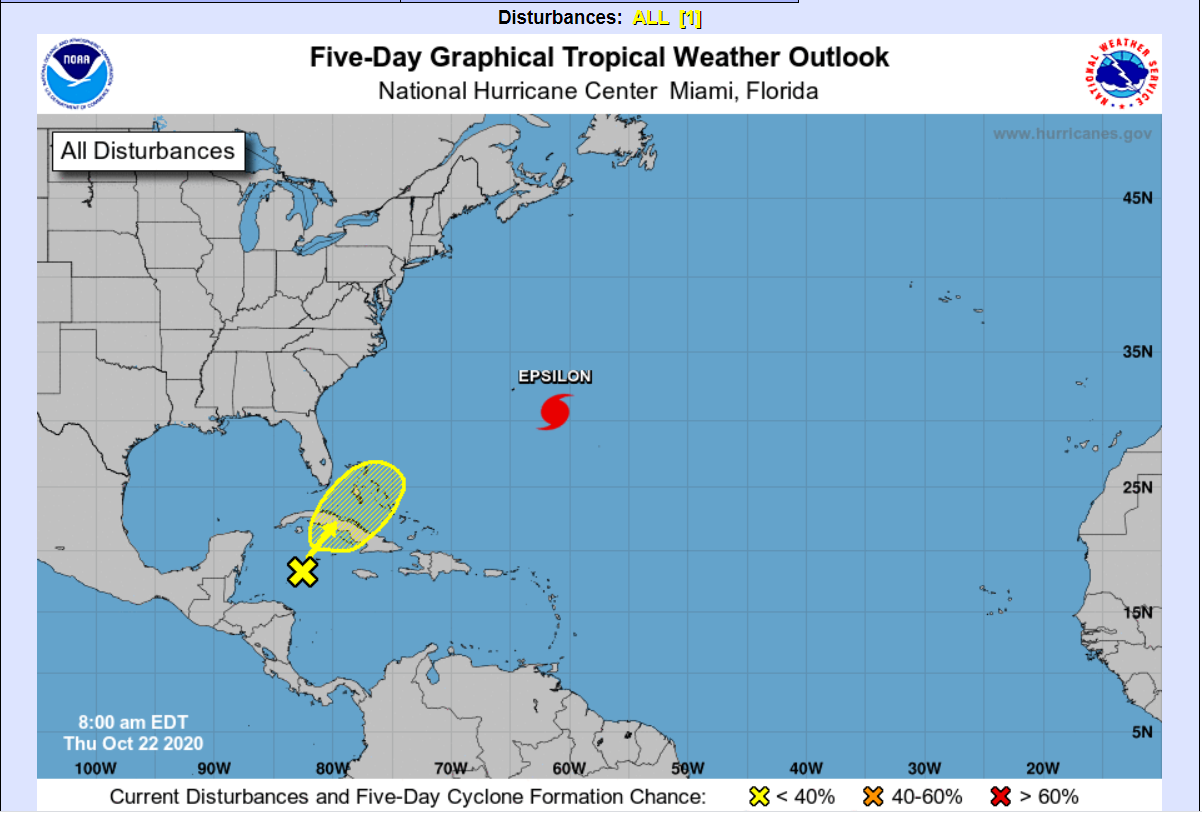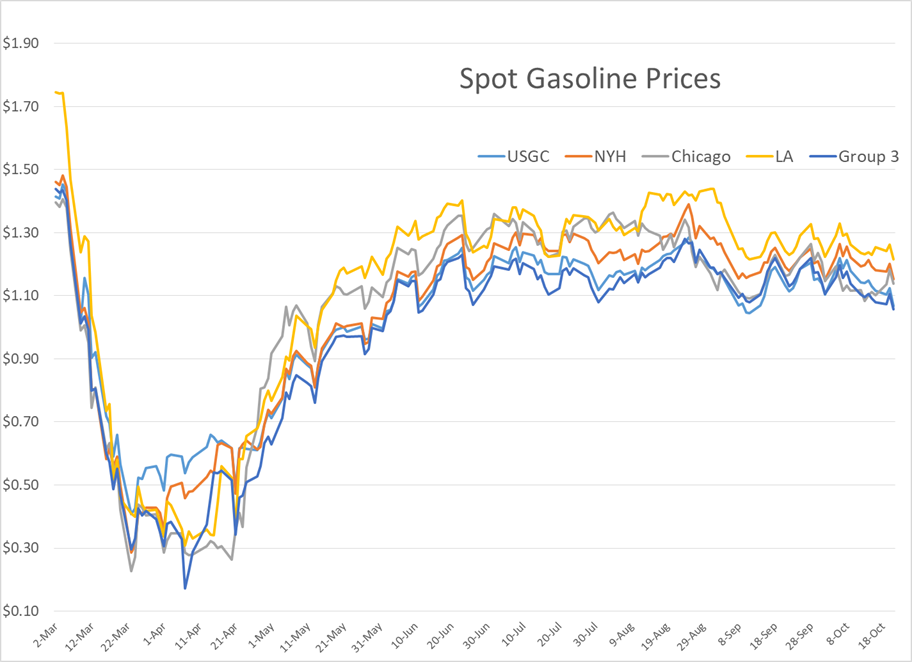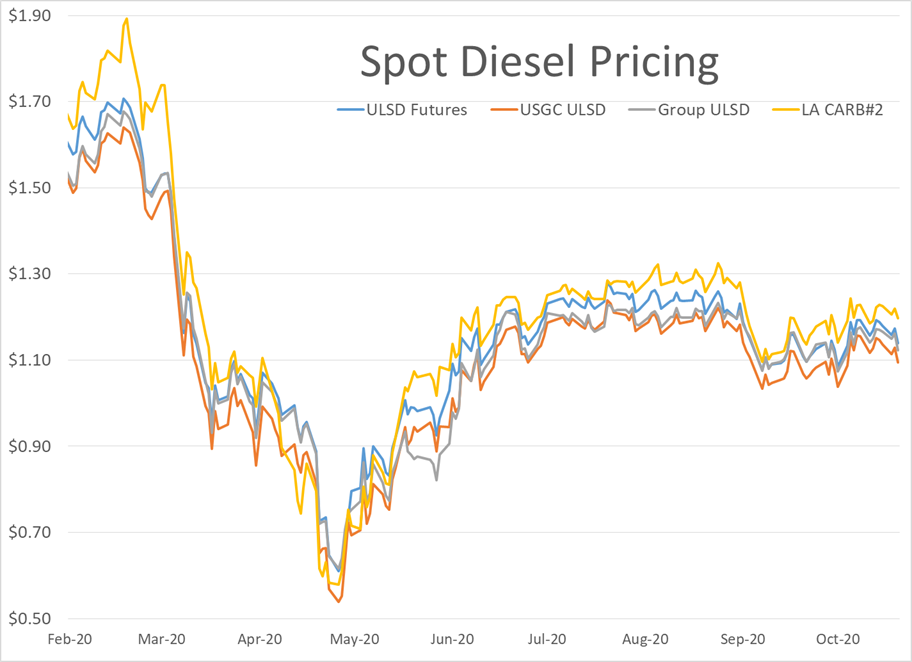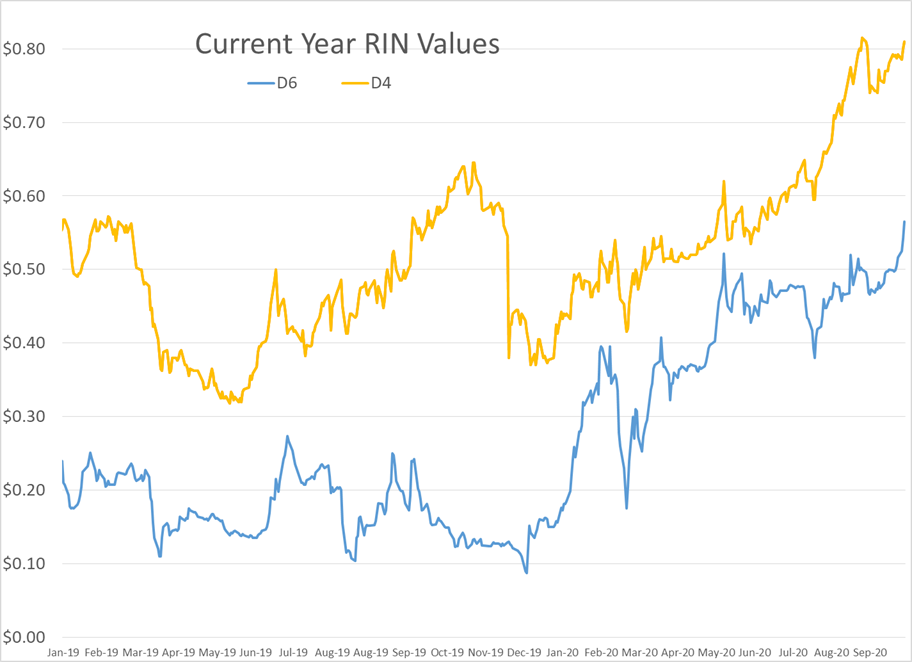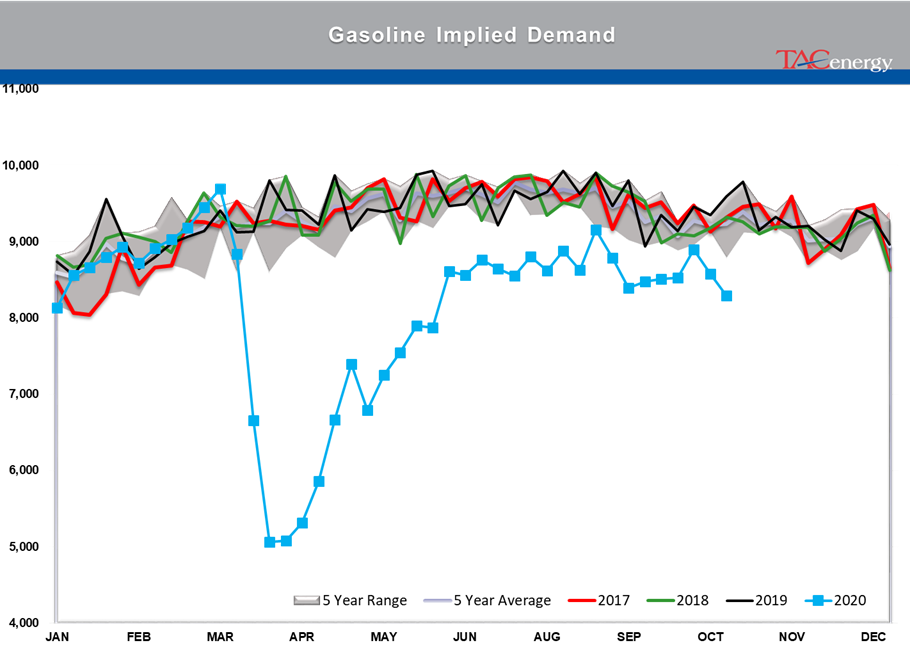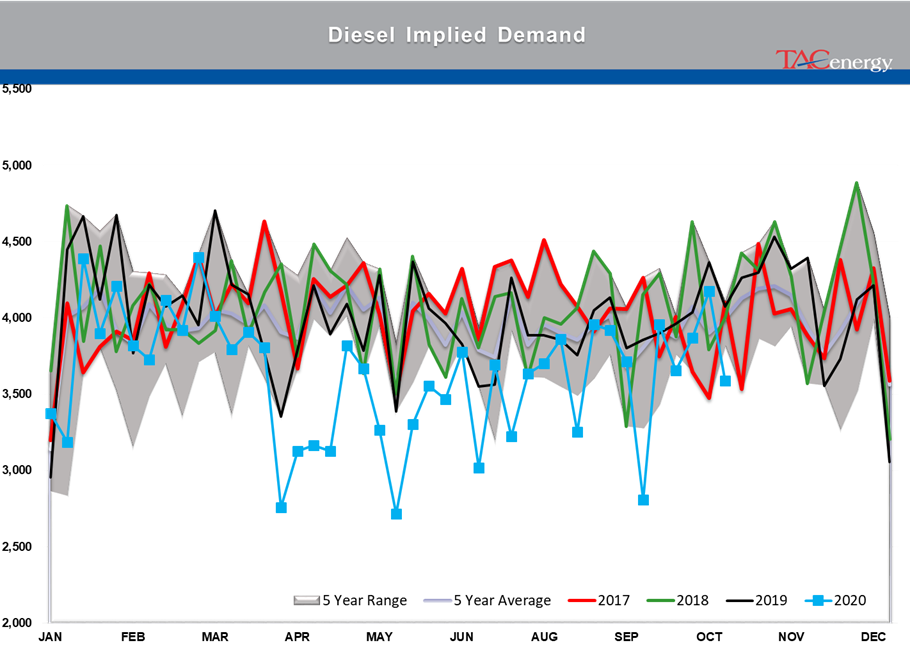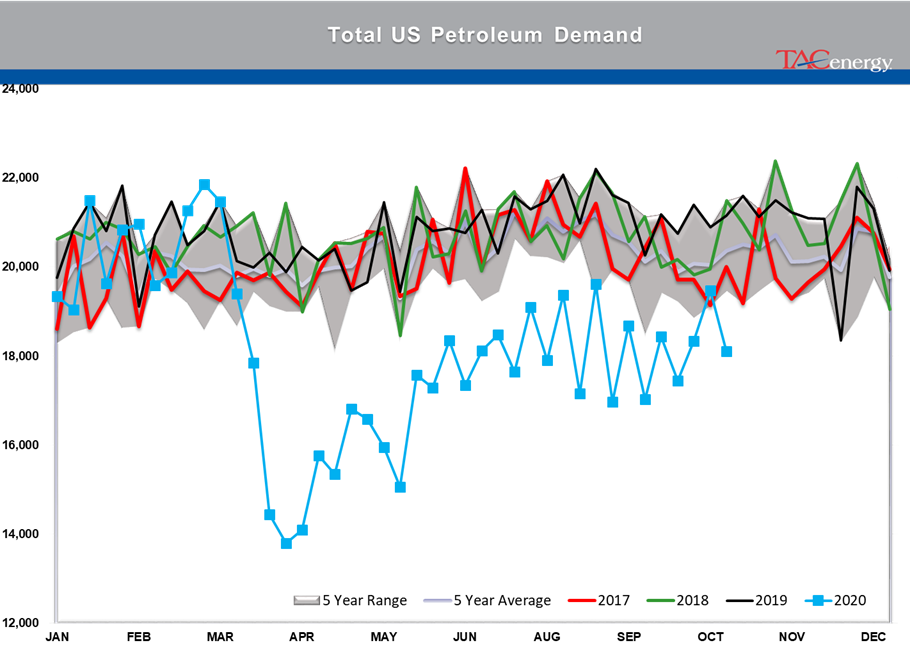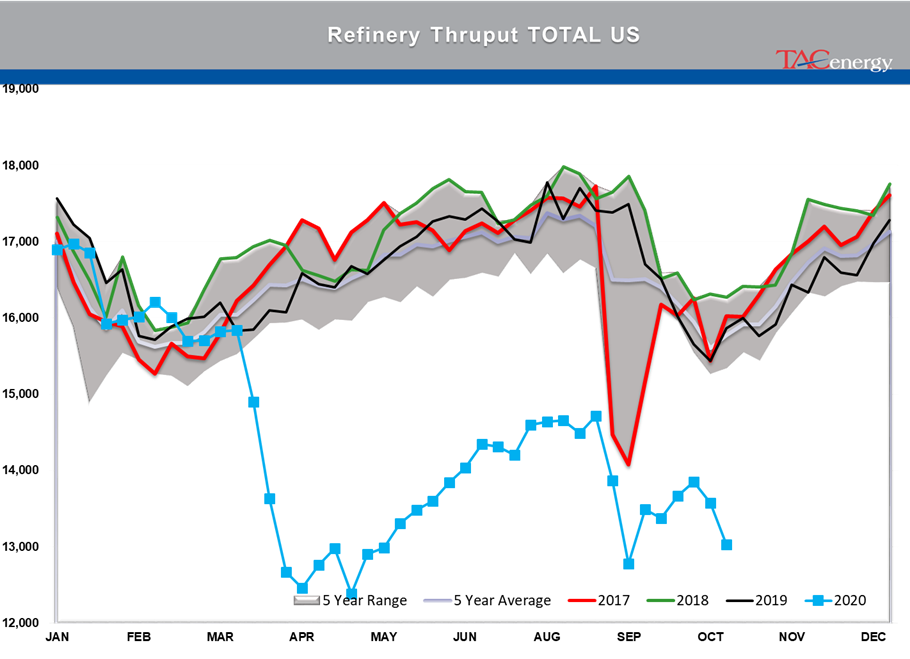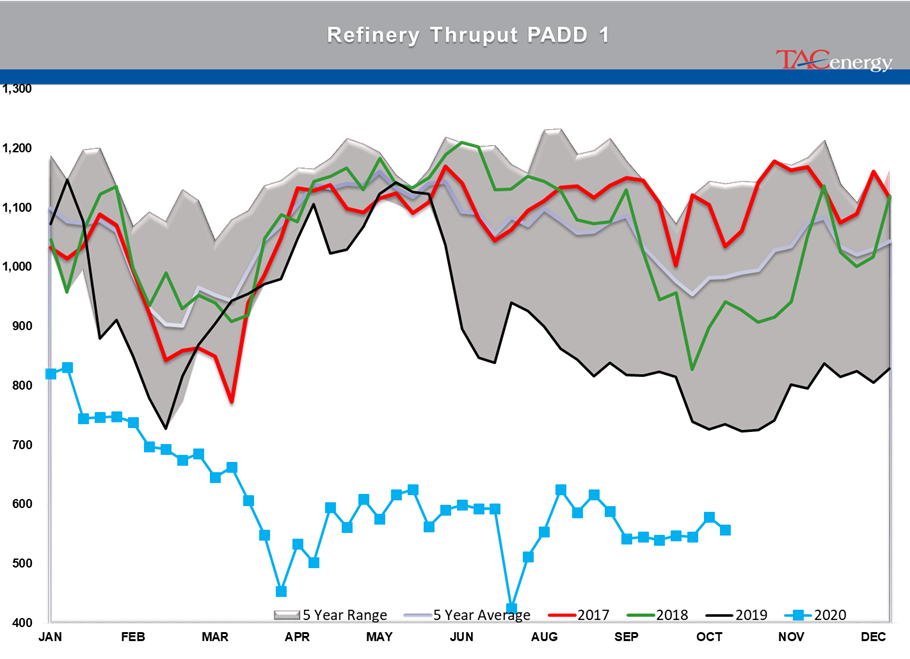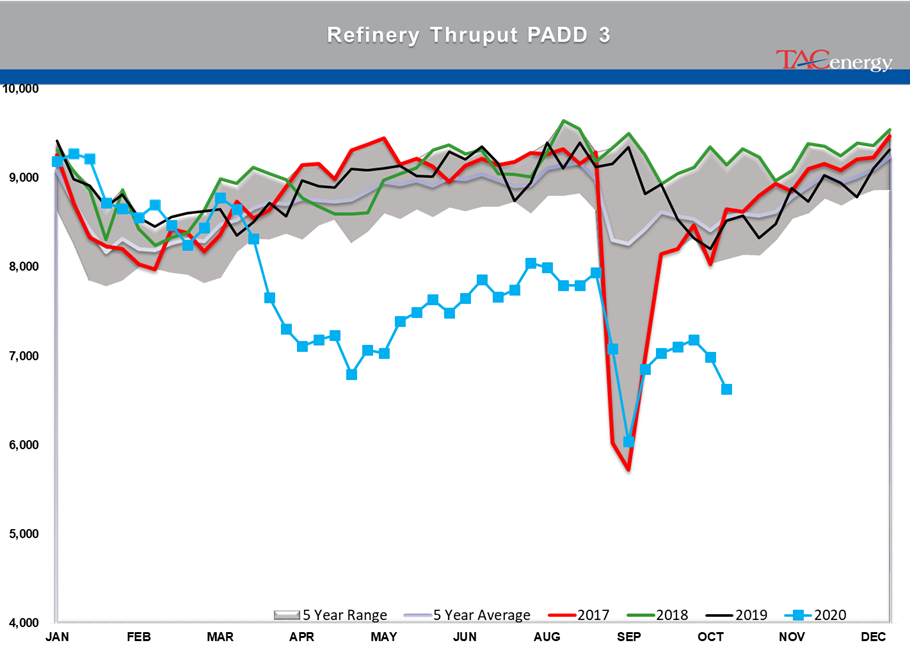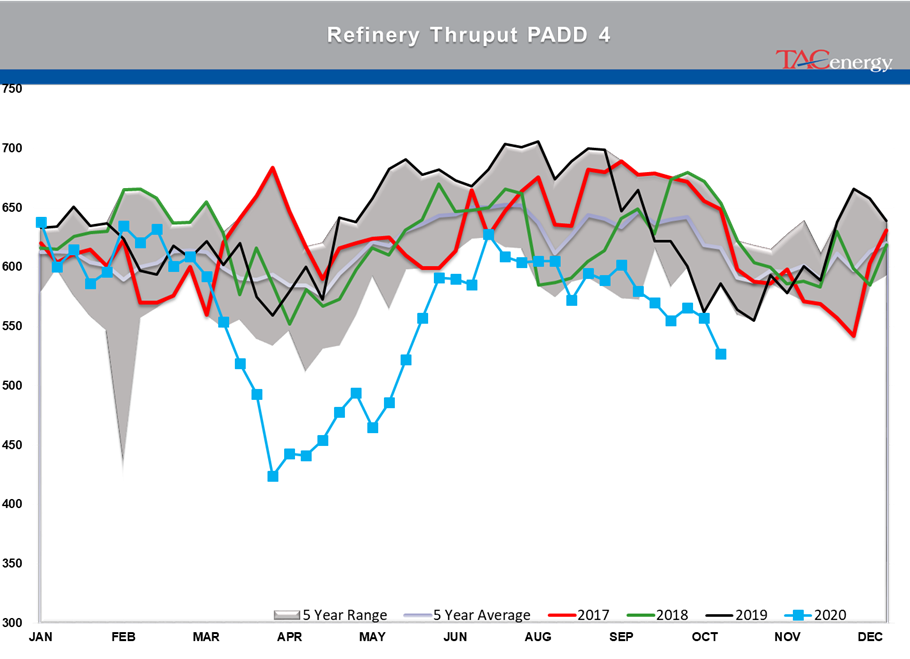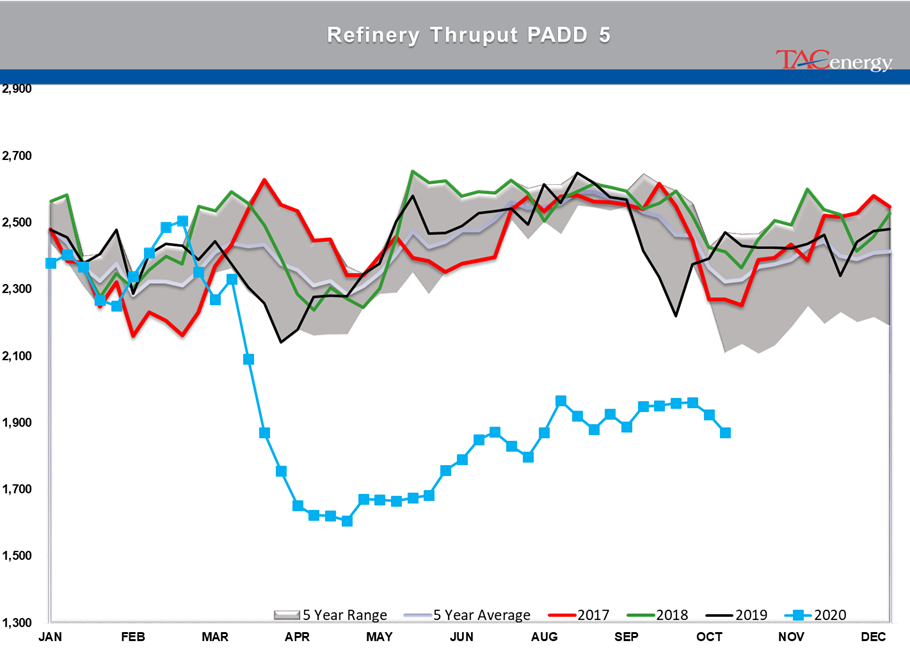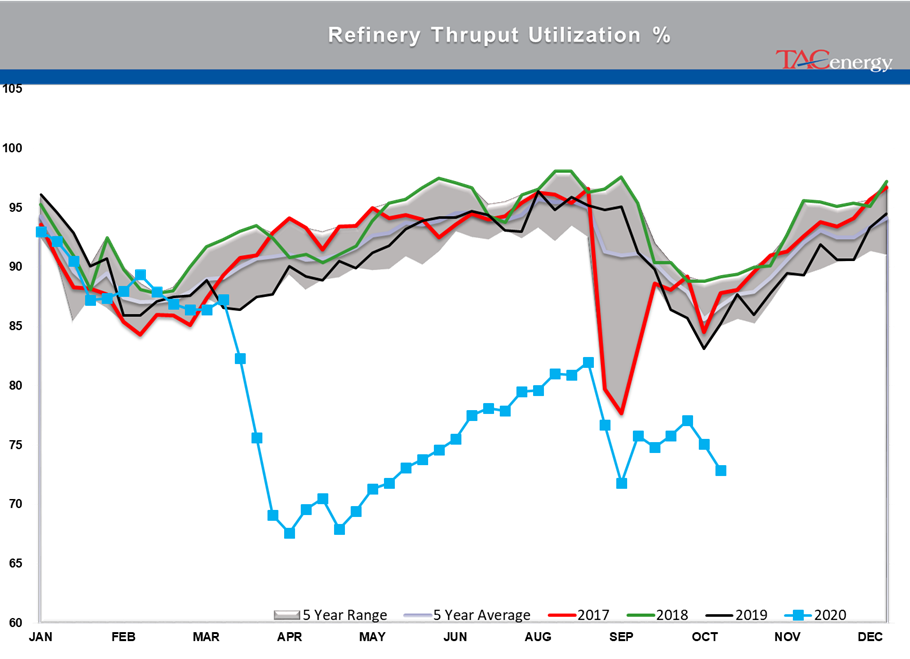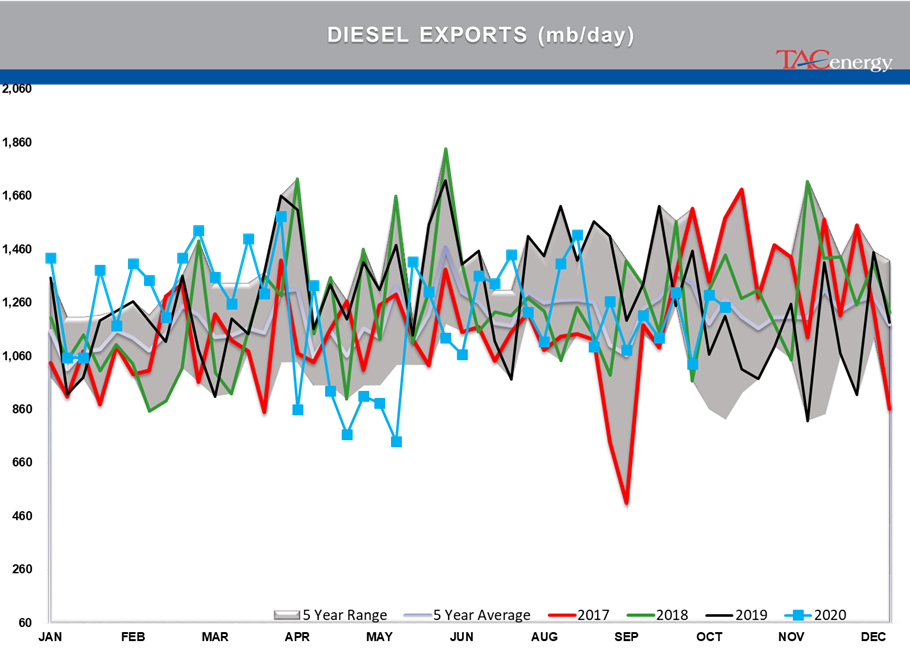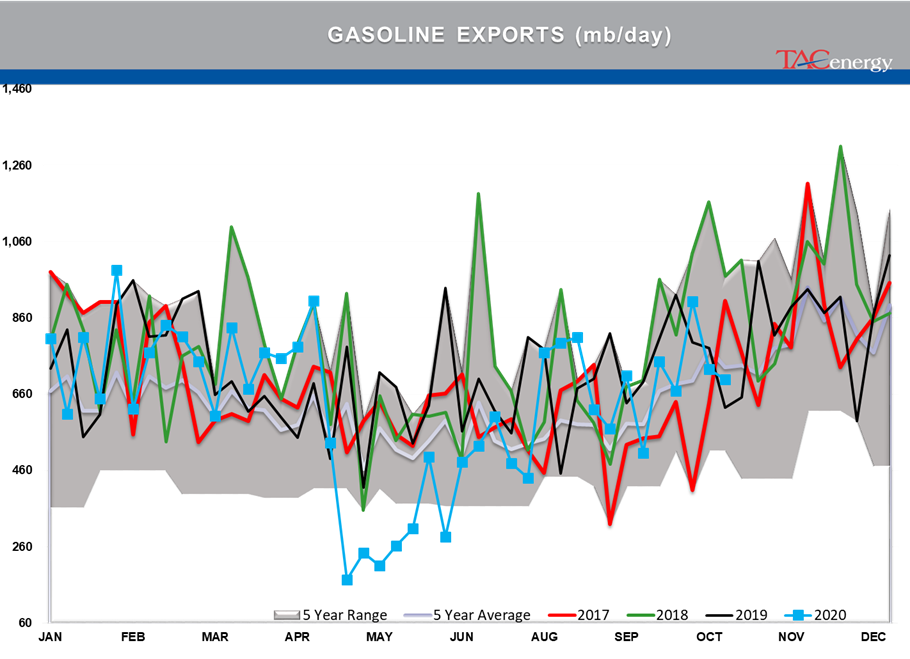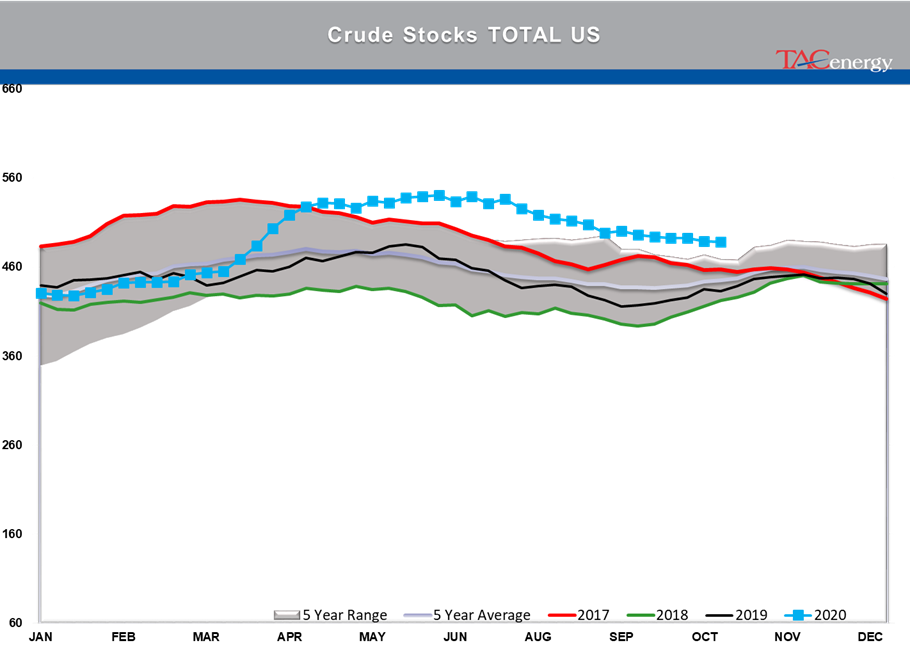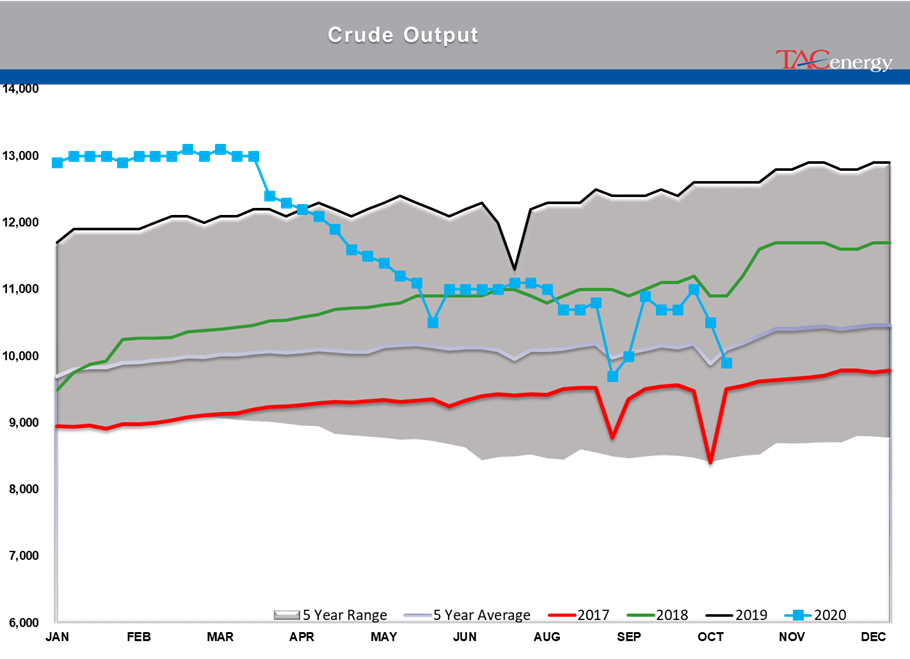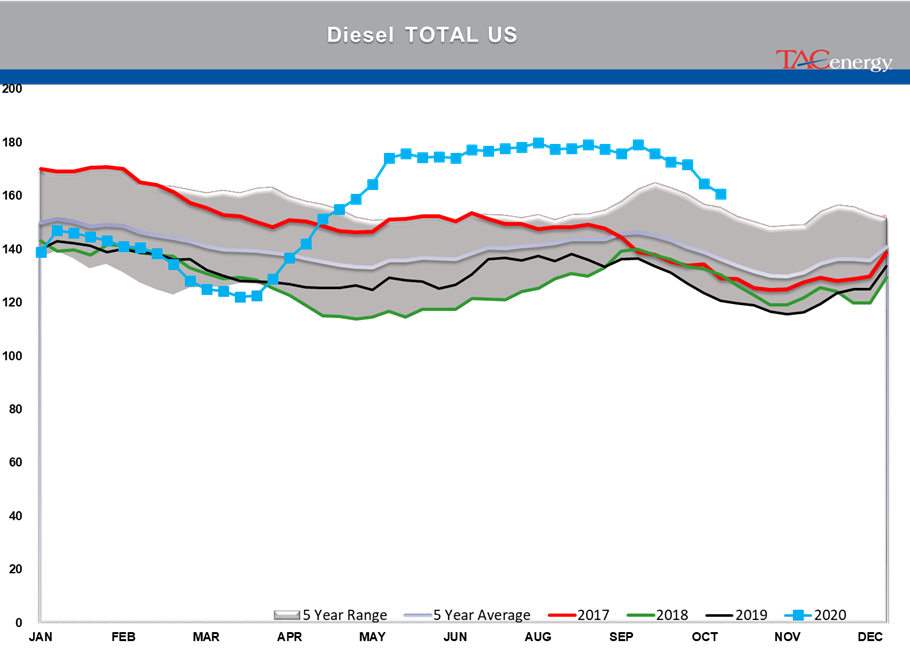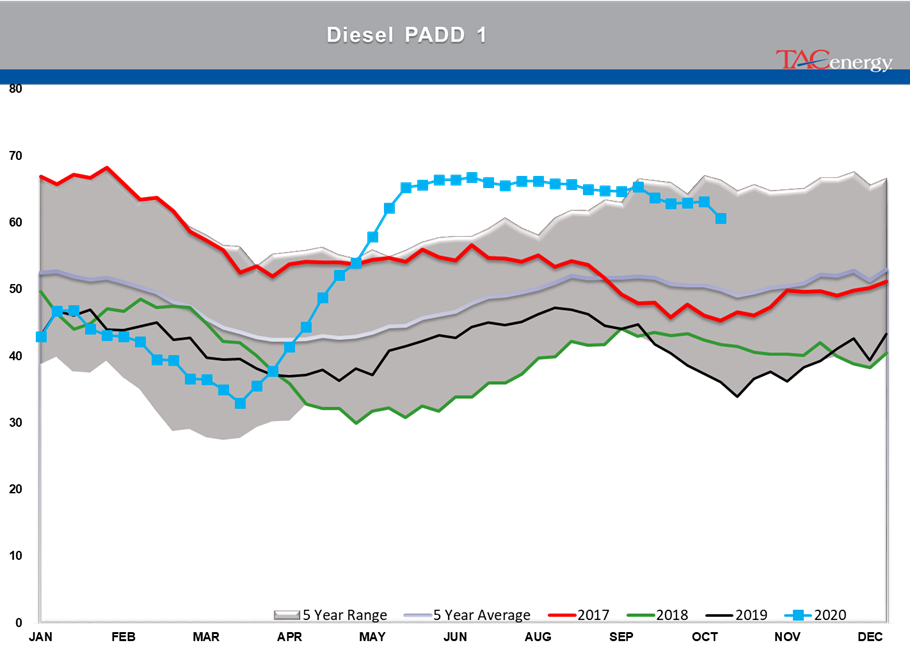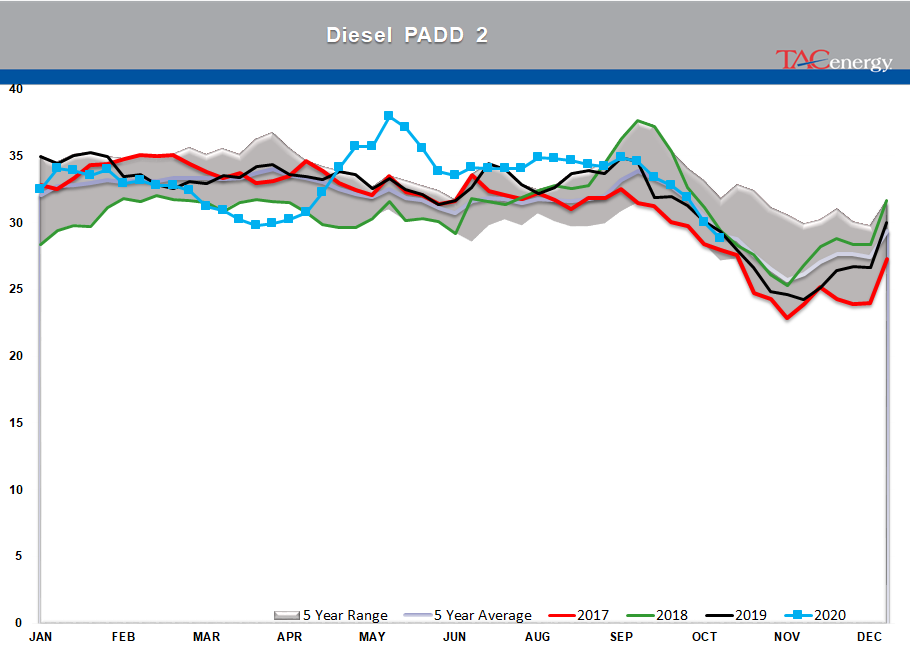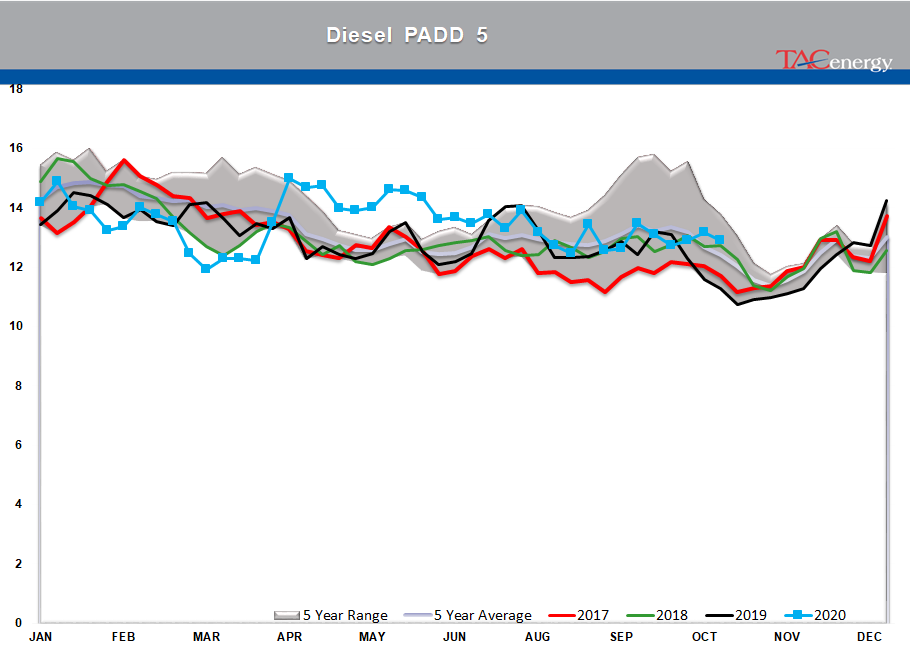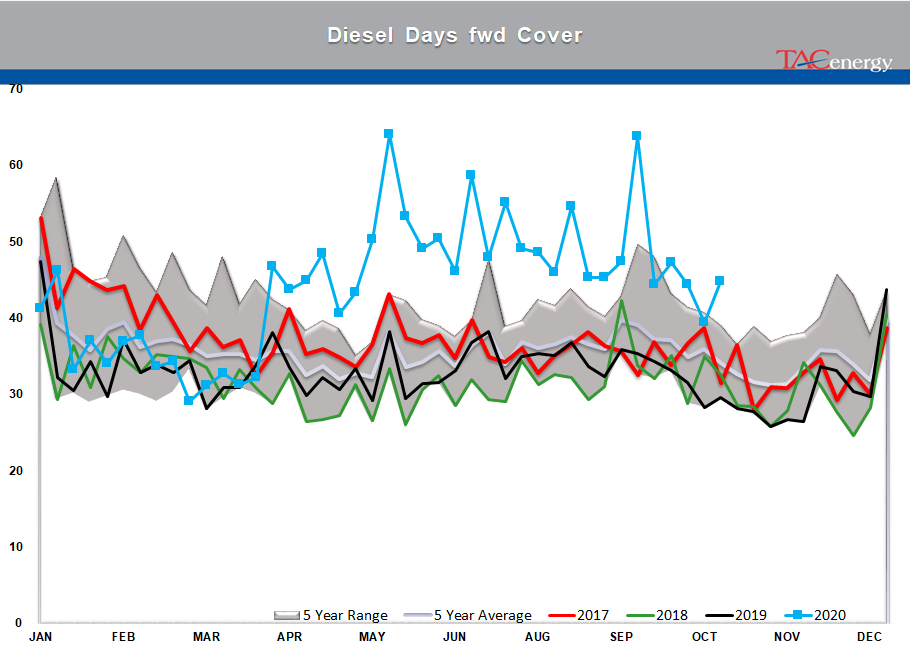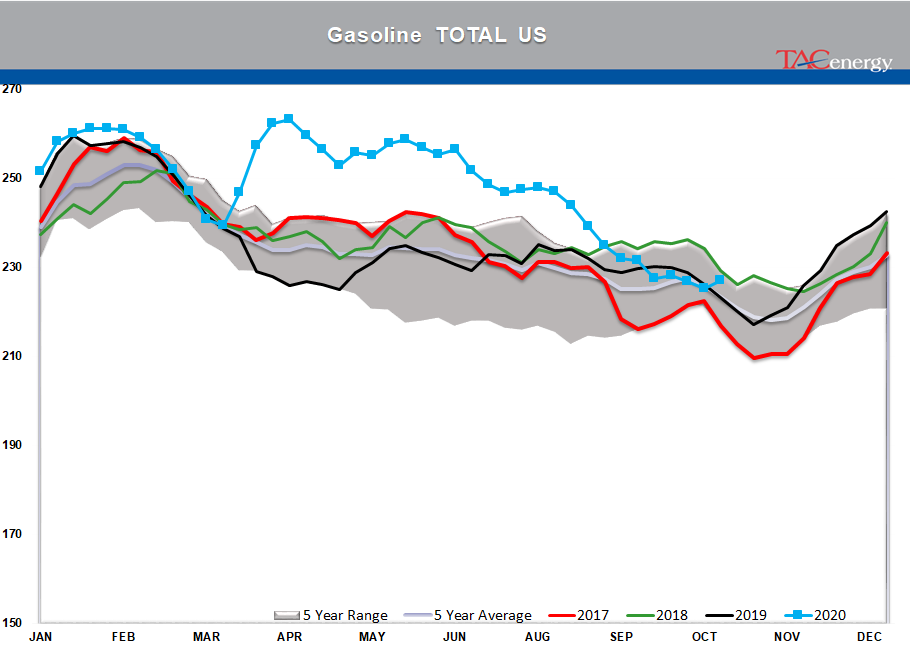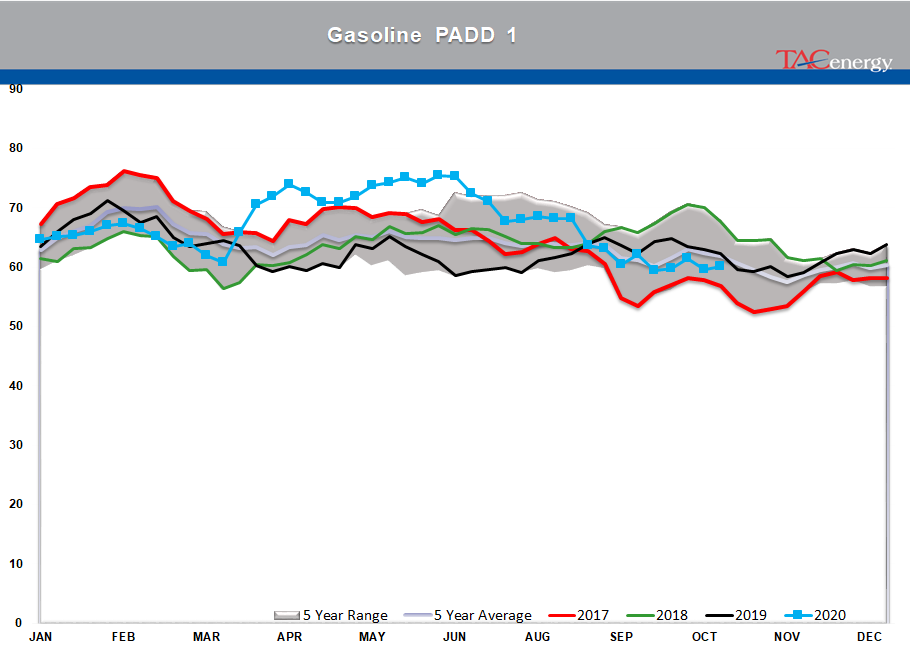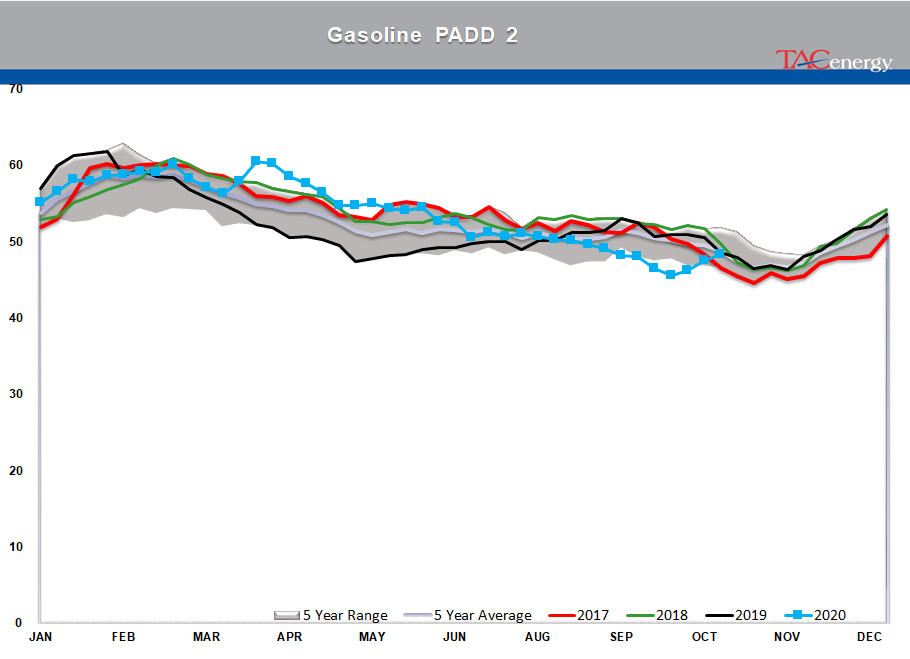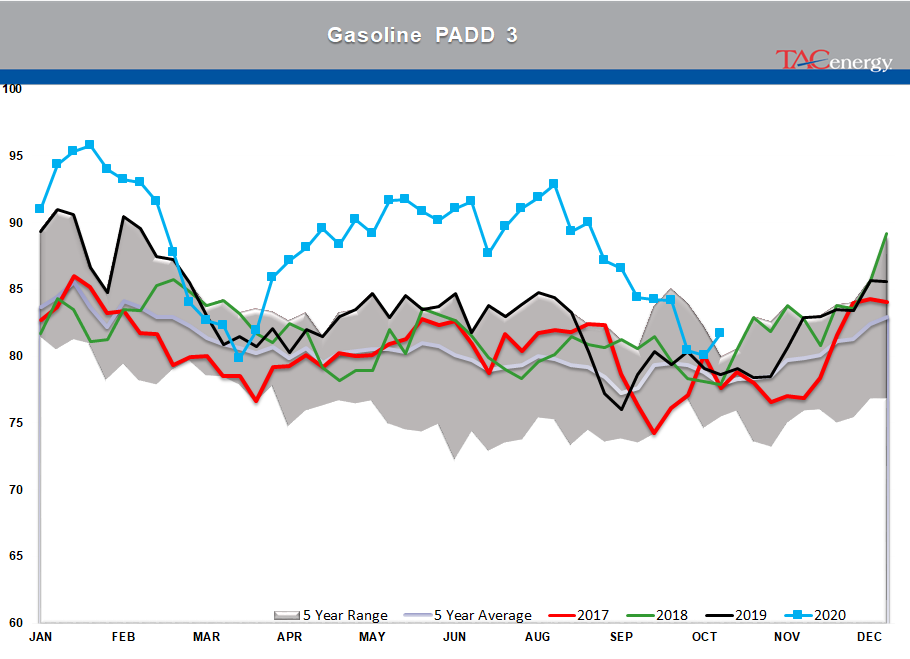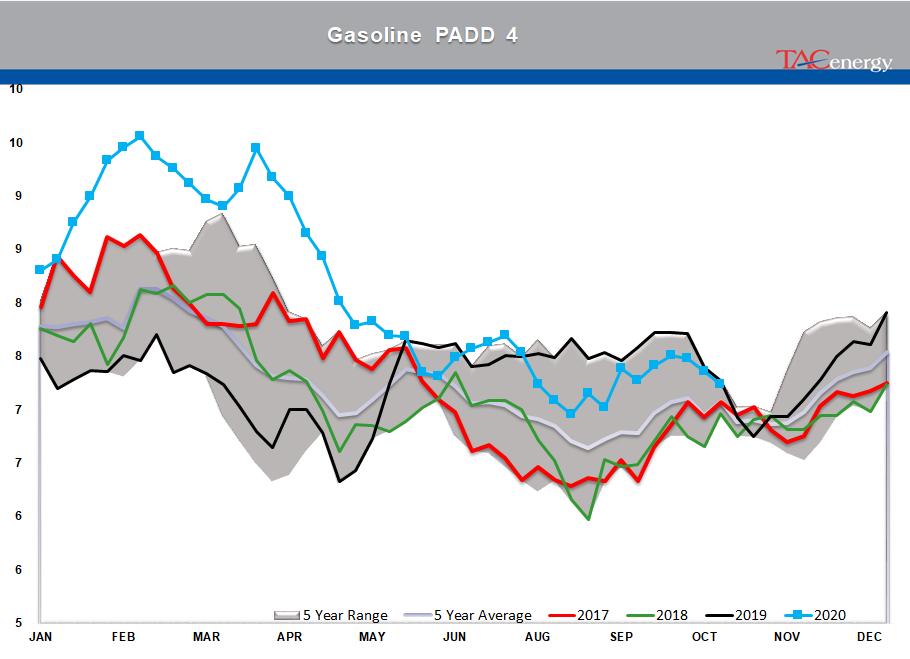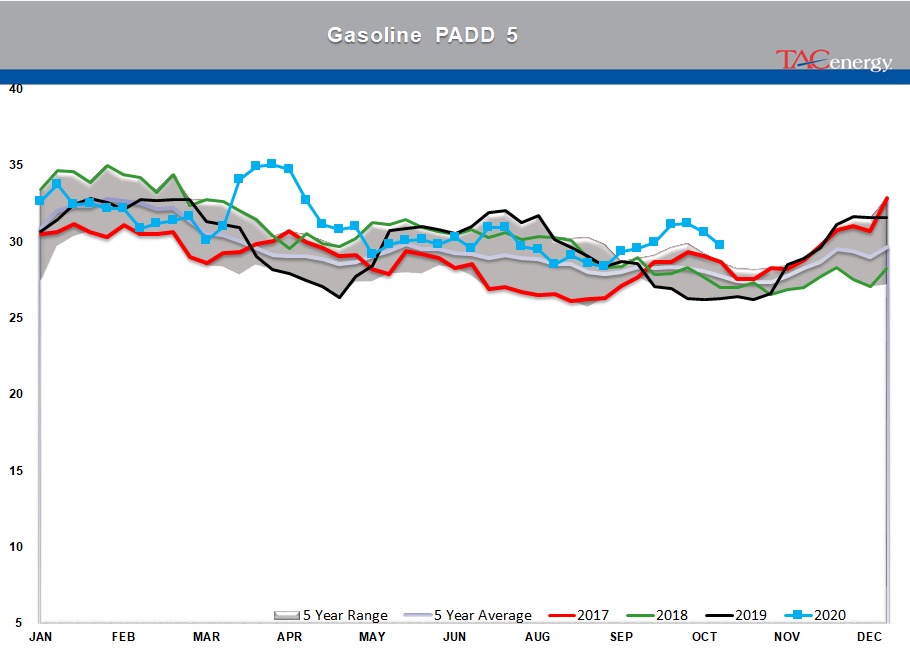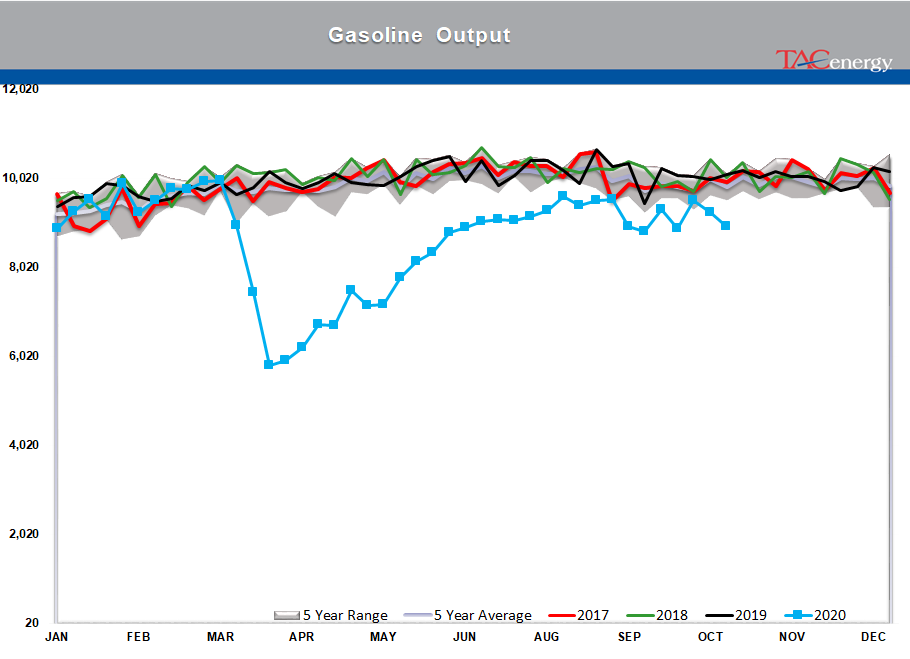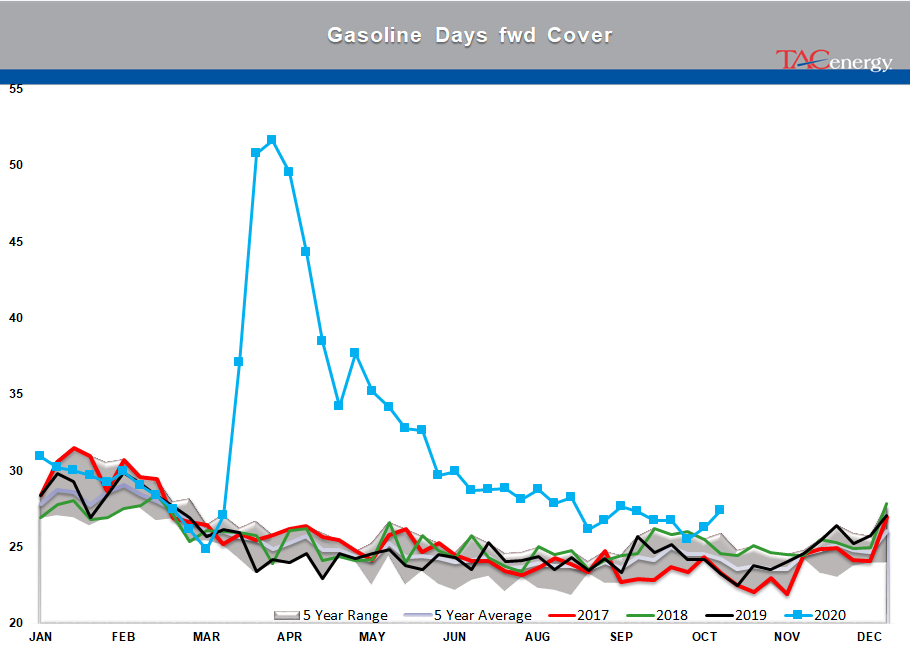Shockwave Sent Through Energy Arena

Weak demand estimates reported by the DOE sent a shockwave through the energy arena Wednesday, pushing refined product futures to their lowest levels in two weeks, and some cash prices to their lowest levels in five months. All talk and no action from Washington on a stimulus bill to try and prop up the economy, which does not seem to be helping the sentiment for either energy or equity markets, as an attempt at a recovery bounce overnight has already fallen flat.
U.S. gasoline demand reached an 18 week low according to the DOE’s weekly estimate, and gasoline prices in many markets followed suit, reaching their lowest levels in about the same time-frame.
Gasoline prices in the NYH, LA and Group 3 spot markets all reached their lowest levels since early May during Wednesday’s sell-off, and are threatening further losses after the overnight bounce has fizzled in the early going. It’s starting to feel like a move back below $1 for gasoline is inevitable as the seasonal demand slowdown is just beginning, with more run cuts seeming to be the only option for many refiners that might prevent that next move lower.
Diesel demand also saw a large decrease on the week, but unlike gasoline, that figure started from a much higher level and remains above what we saw for most of the summer. Diesel prices were also hit hard during Wednesday’s sell-off, but still have more room to fall before threatening the low end of their sideways range.
Refinery runs were reduced across all 5 PADDs last week, as the lingering effects from Hurricane Delta and fall maintenance were both in play. In normal years we’d expect to see fall maintenance peak around this time, and then see refinery runs climb steadily through the end of the year. With this year being anything but normal, the next few weeks will bring an interesting showdown between the seasonal patterns and a weak margin environment.
Q3 earnings reports are highlighting just how challenging the operating environment is for refiners, and why more run cuts may be likely over the next several months. This morning, Valero and Neste both reported operating losses in their traditional refining segments for the quarter, while their renewable divisions continued to see increasing profits.
The plight of refiners led a group of Senators to ask the EPA to waive the planned increase in renewable volume obligations for 2021, to help those companies deal with the pandemic, and avoid excessive costs for unreachable targets caused by the weak demand environment. RIN prices have surged to multi-year highs in recent days thanks to stronger crop prices and last month’s ruling on restricting refinery waivers. We’ll see today if the request sparks a pullback, or is shrugged off given the bigger fish that need frying in Washington these days.
Hurricane Epsilon blew up into a major Hurricane in the past 24 hours – far exceeding earlier forecasts – but is expected to stay out to sea and not threaten land. The system being tracked in the Caribbean is given 30% odds of developing by the NHC, but should not impact the U.S. other than perhaps dumping some rain on south Florida.
Click here to download a PDF of today's TACenergy Market Talk.
Latest Posts
Week 16 - US DOE Inventory Recap
Energy Markets Trading Quietly In The Red As Ethanol Prices Rally To Five-Month High
The Struggle For Renewable Producers Continues As A Rapid Influx Of Supply And Crashing Credit Prices Make Biodiesel
After Years Of Backwardation, Diesel Prices Have Slipped Into Contango Over The Past Week
Social Media
News & Views
View All
Week 16 - US DOE Inventory Recap

Energy Markets Trading Quietly In The Red As Ethanol Prices Rally To Five-Month High
Energy markets are trading quietly in the red to start Wednesday’s session after a healthy bounce Tuesday afternoon suggested the Israel-Iran-linked liquidation had finally run its course.
There are reports of more Ukrainian strikes on Russian energy assets overnight, but the sources are sketchy so far, and the market doesn’t seem to be reacting as if this is legitimate news.
Ethanol prices have rallied to a 5-month high this week as corn and other grain prices have rallied after the latest crop progress update highlighted risks to farmers this year, lower grain export expectations from Ukraine, and the approval of E15 blends this summer despite the fact it pollutes more. The rally in grain and renewables prices has also helped RIN values find a bid after it looked like they were about to test their 4-year lows last week.
The API reported small changes in refined product inventories last week, with gasoline stocks down about 600,000, while distillates were up 724,000. Crude oil inventories increased by 3.2 million barrels according to the industry-group estimates. The DOE’s weekly report is due out at its normal time this morning.
Total reported another upset at its Port Arthur refinery that’s been a frequent flier on the TCEQ alerts since the January deep freeze knocked it offline and damaged multiple operating units. This latest upset seems minor as the un-named unit impacted was returned to normal operations in under an hour. Gulf Coast basis markets have shrugged off most reports of refinery upsets this year as the region remains well supplied, and it’s unlikely we’ll see any impact from this news.
California conversely reacted in a big way to reports of an upset at Chevron’s El Segundo refinery outside of LA, with CARBOB basis values jumping by more than a dime. Energy News Today continued to show its value by reporting the upset before the flaring notice was even reported to area regulators, proving once again it’s ahead of the curve on refinery-related events. Another industry news outlet meanwhile struggled just to remember where the country’s largest diesel seller is located.
Click here to download a PDF of today's TACenergy Market Talk

The Struggle For Renewable Producers Continues As A Rapid Influx Of Supply And Crashing Credit Prices Make Biodiesel
The sigh of relief selloff continues in energy markets Tuesday morning, with gasoline prices now down more than 20 cents in 7 sessions, while diesel prices have dropped 26 cents in the past 12. Crude oil prices are within a few pennies of reaching a 1 month low as a lack of headlines from the world’s hot spots allows some reflection into the state of the world’s spare capacity for both oil and refined products.
Gasoline prices are trading near a 6-week low this morning, but still need to fall about another nickel in order to break the weekly trendline that pushed prices steadily higher since December. If that trend breaks, it will be safer to say that we saw the end of the spring gasoline rally on April 12th for the 2nd year in a row. Last year RBOB futures peaked on April 12 at $2.8943 and bottomed out on May 4th at $2.2500. The high (at this point) for this year was set on April 12th at $2.8516, and the low overnight was $2.6454.
It’s not just energy commodities that are seeing an unwind of the “flight to safety” trade: Gold prices had their biggest selloff in 2 years Monday and continue to point lower today. Just how much money poured into commodities in the weeks leading up to the direct confrontation between Israel and Iran is unclear, but we have seen in year’s past that these unwind-events can create a snowball effect as traders can be forced to sell to cover their margin calls.
Supply > Demand: The EIA this morning highlighted the record setting demand for natural gas in the US last year, which was not nearly enough to offset the glut of supply that forced prices to a record low in February. A shortage of natural gas in Europe was a key driver of the chaotic markets that smashed just about every record in 2022, and an excess of natural gas supply in Europe and the US this year is acting as a buffer, particularly on diesel prices.
The struggle for renewable producers continues as a rapid influx of supply and crashing credit prices make Biodiesel, RD and SAF unprofitable for many. In addition to the plant closures announced in the past 6 months, Vertex Energy reported Monday it’s operating its Renewable Diesel facility in Mobile AL at just 50% of capacity in Q1. The truly scary part for many is that the $1/gallon Blender's tax credit ends this year and is being replaced by the “Clean” Fuel production credit that forces producers to prove their emissions reductions in order to qualify for an increased subsidy. It’s impossible to say at this point how much the net reduction will be for domestic producers, but importers will get nothing, and at current CI values, many biodiesel producers may see their “blend credit” cut by more than half.
Click here to download a PDF of today's TACenergy Market Talk.
